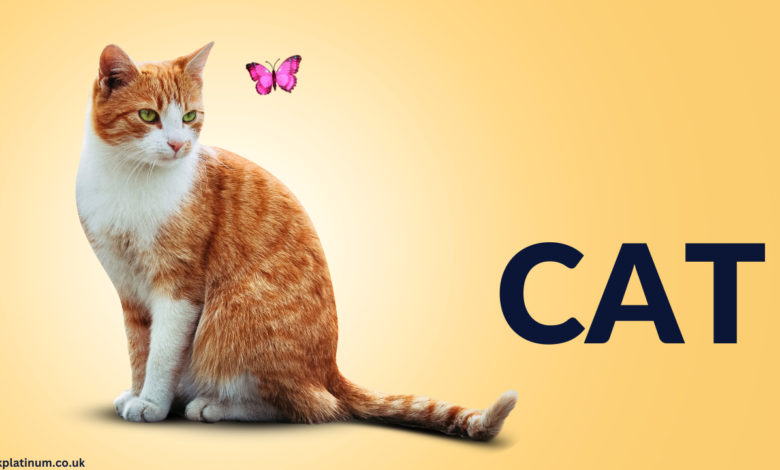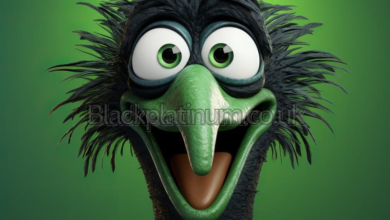Exploring the Artistic Beauty of Drawing:a4z_-ymtkr8= Cats

When it comes to creating artwork, few subjects elicit as much charm and curiosity as cats. These enigmatic creatures have captivated artists for decades, generating innumerable masterpieces in a variety of disciplines. Among the various types of cat art, drawing:a4z_-ymtkr8= cats are a distinctive and popular choice for both amateur and professional artists.
In this tutorial, we’ll look at the techniques, tools, and creative processes that go into sketching cats. Whether you’re a seasoned artist or just getting started with drawing, learning how to capture the essence of cats in your work can be both enjoyable and rewarding.
The Fascination with Cats in Art
Cats have always had an important place in art and culture. From ancient Egyptian portrayals of felines as sacred entities to modern internet memes, these critters have influenced a wide spectrum of artistic expressions. Their beautiful motions, inquisitive nature, and secretive personalities make them perfect subjects for visual storytelling.
Cats’ beauty is certainly appealing, whether it’s through their piercing eyes, beautiful stance, or velvety fur. That is why many artists use drawing:a4z_-ymtkr8= cats to capture these characteristics in their artwork.
Getting Started with Drawing:a4z_-ymtkr8= Cats
If you want to learn how to draw a cat, you must first understand the fundamentals. Here’s a step-by-step guide to get you started on your own drawing:a4z_-ymtkr8= cats:
- Gather Your Materials: The first step in creating a sketch is gathering your equipment. To draw cats, all you need is a pencil, eraser, sketchbook, and sometimes some coloured pencils or markers for finishing touches. While a basic pencil sketch is a good beginning point, you can experiment with different media to add texture and depth to your artwork.
- Start with Basic Shapes: Begin by creating basic shapes to outline the cat’s body and head. Draw circles and ovals to represent the head, body, and limbs. This will act as the foundation for your drawing, making it easier to define the cat’s stance later.
- Refining the Structure: After defining the basic forms, begin refining the lines and adding the cat’s distinguishing traits. Pay close attention to the cat’s face structure, especially the position of its eyes, nose, and ears. One of the most significant parts of drawing:a4z_-ymtkr8= cats is capturing the distinct nature of each cat, whether it be curious, playful, or serene.
- Adding Fur Texture: The texture of a cat’s fur is a key component of its visual appeal. To replicate the appearance of fur, use short, rapid pencil strokes. Vary your pencil’s pressure to generate varied hues and depths, and utilise layering techniques to build up the texture.
- Focus on Details: Small details such as the whiskers, the light reflection in the eyes, and the cat’s stance can significantly improve the overall quality of your drawing. a4z_-ymtkr8 equals cats. These small details bring the artwork to life, giving it a more realistic and dynamic appearance.
- Shading and Final Touches: Finally, use shading to give depth and dimension. The light source in your picture determines where the shadows fall, so pay attention to how the fur reflects light. Shading, whether with graphite or coloured pencils, adds realism and refines the drawing.
Why Choose drawing: a4z_-ymtkr8= Cats?
Why should you focus on drawing: a4z_-ymtkr8=? Do you incorporate cats into your artistic endeavours? Cats are a popular subject among painters for various reasons:
- Endless Variety: No two cats are precisely same, and each has its own particular personality and physical characteristics. This creates drawing:a4z_-ymtkr8= cats are a very diverse subject, allowing artists to experiment with a variety of expressions, positions, and features.
- Aesthetic Appeal: Cats are visually appealing animals with exquisite lines, soft fur, and graceful movements. Their beauty makes them ideal subjects for both realistic and stylised art.
- Emotional Connection: Many people associate cats with comfort, friendship, and affection. Drawing cats can elicit emotional responses from both the artist and the audience, making it a valuable form of expression.
- Accessible for Beginners: Beginners can sketch a cat, even if catching the whole complexity of its form is difficult. The basic shapes and structure are easy to outline, and painters can steadily improve their skills over time.
The Popularity of Drawing: a4z_-ymtkr8= Cats in Digital Art
In the age of digital media, drawing:a4z_-ymtkr8= cats have also become popular subjects in the field of digital art. Many artists utilise tools such as Photoshop, Procreate, or Adobe Illustrator to create beautiful cat portraits with brilliant colours and exquisite details. Digital tools provide greater versatility, creativity, and the capacity to produce hyper-realistic or imaginative depictions of cats.
The principles of drawing apply whether you use traditional pencil and paper or a digital tablet. Layers, textures, and brushes can be used by digital artists to add intricacy to their drawing:a4z_-ymtkr8= cats Creations. The advantage of digital art is that it allows for endless refinement without the risk of smearing or damaging the paper.
Conclusion
Creating a drawing:a4z_-ymtkr8= cats art is more than just portraying a cat’s physical appearance; it is also about communicating the personality and grace of these fascinating creatures. Whether you choose to draw cats realistically, abstractly, or in a playful cartoonish style, the choices are unlimited.
Mastering the skills discussed above and experimenting with different styles will allow you to create attractive and interesting artwork that highlights cats’ distinctive character. So, get your sketchbook, sharpen your pencils, and begin your own artistic adventure into the realm of drawing:a4z_-ymtkr8= cats Today is kitties’ day!
Also Read: Parker McCollum Height: How Tall Is the Country Music Star?
